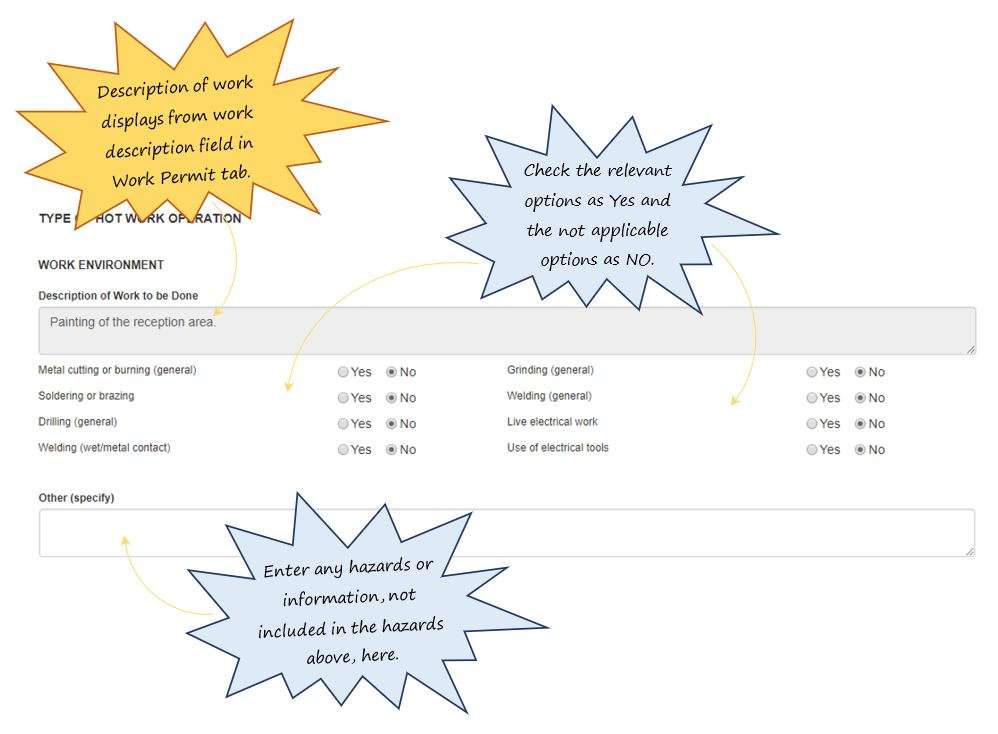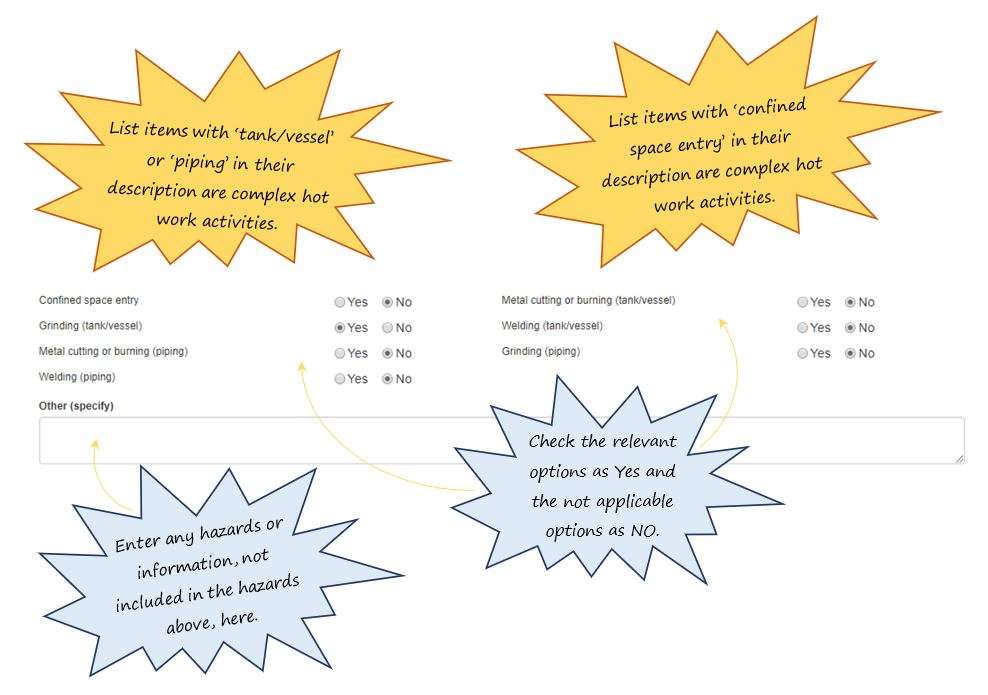How do I complete the Work Environment section of the Hot Work tab, in OHS Online?
Sure thing! Let's take a closer look at this section then. The first thing which needs to be done is to examine the type of hot work operation(s) which are involved in order to determine what potential hazards are associated with the hot work being done.
This work environment section does this and is very quick and easy to complete. It consists of a series of common height work hazards, which could be hazardous during the work being done. Some of these hazards will apply to standard hot work activities and some will apply to complex hot work activities. The Permit Issuer and Permit Requester work together to determine which hazards are relevant and which are not. Those which are, are selected and checked as YES. Those which aren't, are checked as NO.
Let's take a look at standard hot work activity hazards first. These hazards would be relevant where standard, basic hot work processes are performed and the main concern would be with the potential for fires to break out as a result of these activities. This would also apply to hot work activities on pipes, vessels or tanks where the contents are known and they are known to be inert, for example, fixing pipes in a water sprinkler system:
Now, let's take a look at the complex hot work activity hazards. These hazards would be relevant where hot work processes require entry into a confined space or are performed on a vessel, tank or piping which has unknown contents in it or has contained contents known to be flammable, combustible or explosive in nature. In these cases, a new set of specific safety precautions need to be determined in order to ensure the hot work carried out is safe:
In both cases, some of the hot work hazards check options have layer 2 effects, so when they are selected, they will cause specific precautions to be displayed further on in the Hot Work tab.



Leave a comment